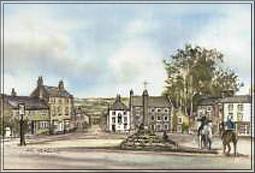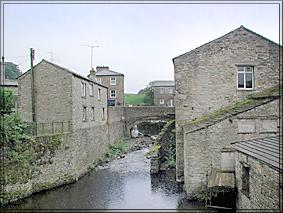Yorksview
Middleham stands on the Ure in Wensleydale, north of Masham and only a couple of miles from the larger Leyburn. Alternatively one can get there by travelling through Coverdale from Kettlewell, one of my favourite drives. In medieval times Middleham was the commercial centre of Wensleydale but now it has been overtaken by Leyburn in terms of size and focus.
Middleham’s cobbled market place is surrounded by Georgian buildings. The fortified church of St Mary and St Akelda (a ninth century Saxon martyr) dates from the thirteenth century. Accommodation and refreshments can be obtained at the White Swan, the Black Swan and the Richard III. Today the town, if it really is a town, is a major racehorse training centre, continuing a tradition probably begun by the monks of nearby Jervaulx Abbey. Some 500 racehorses are stabled in the area. Indeed Middleham itself had a racecourse until the nineteenth century.
In the Middle Ages if a place was six miles from a market it could apply for permission to erect a market cross. Middleham’s market cross is in two parts and traders made contracts by shaking hands in the space between the two parts.
|
One of the country’s first suspension bridges was built at Middleham in 1829. Unfortunately it collapsed when a herd of cows marched in step across it. Doing a barn dance presumably. It is now a cast iron bridge flanked by the original crenellated towers at each end. It appears remarkably incongruous in the middle of the Dales.
In 1985 the Middleham jewel was found by a metal detector. It is an exquisite and ornate gold pendant engraved with a Nativity scene on the back and the Holy Trinity on the front. It was sold by Sotheby’s for £1.3 million and is now in the Yorkshire Museum at York. It may have belonged to Richard III.
|
Old Middleham Postcard |
However Middleham’s greatest claim to fame is its castle standing on level ground on the edge of the town. It is a remarkably complete ruin, ‘rather like an old-fashioned toy castle’ (The Daily Telegraph Castles of England) and ‘exactly what you expect a castle to look like’.
The original castle was built by Ribald in 1086 to the motte and bailey model and of wood. Its remains can still be seen close to the present castle and it doubtless assisted in the subjugation of the North. It was replaced by a stone keep in 1170 and surrounded by a square of walls with corner towers in the 1300s.
|
Hawes in Wensleydale |
In the twelfth century it became the property of the powerful and influential Neville family. Richard Neville, better known as Warwick the Kingmaker, was a lead player in the Wars of the Roses. Middleham Castle became the Windsor of the North with lavish banquets for the rich and famous who came here from the Great North Road. At Middleham Edward IV and Richard III learned to be knights. Richard married Neville’s daughter and made Middleham his home. He became King of England in 1483 only to be defeated by Henry Tudor (Henry VII) at the Battle of Bosworth Field in 1485. ‘A horse! a horse! my kingdom for a horse!’ Despite his responsibility for several murders and history’s and Shakespeare’s depiction of him as a near monster, Richard was remembered with affection and respect in the surrounding Dales. Those were harsh times. After this high point Middleham declined in importance. |
The castle is now looked after by English Heritage and anyone on the Yorkshire castle trail shouldn’t miss it. Bernard Ingham (Yorkshire Castles) describes it as arguably ‘Yorkshire’s most magnificent castle’.
‘Now is the winter of our discontent
Made glorious summer by this sun of York’ (Richard III)


